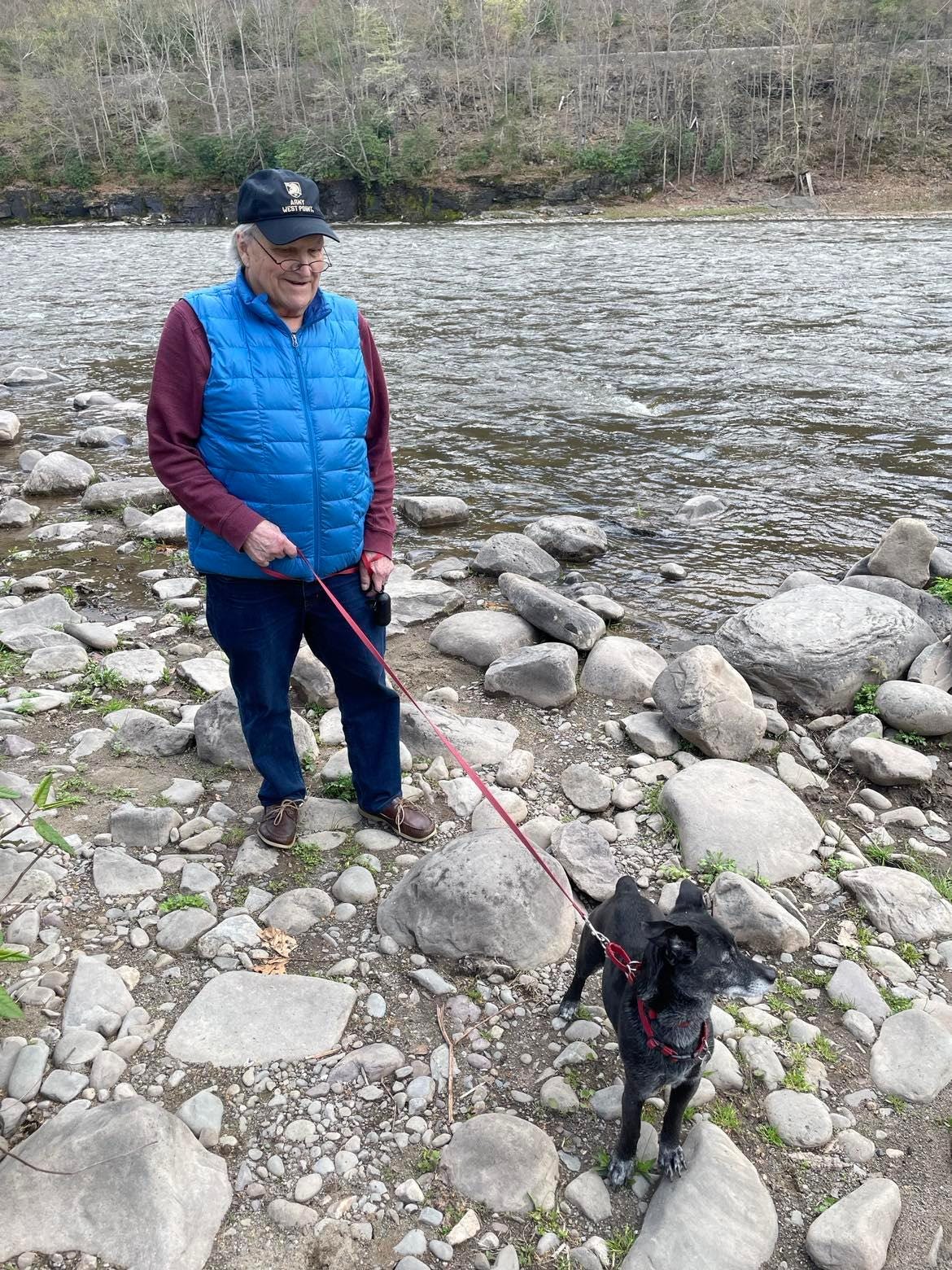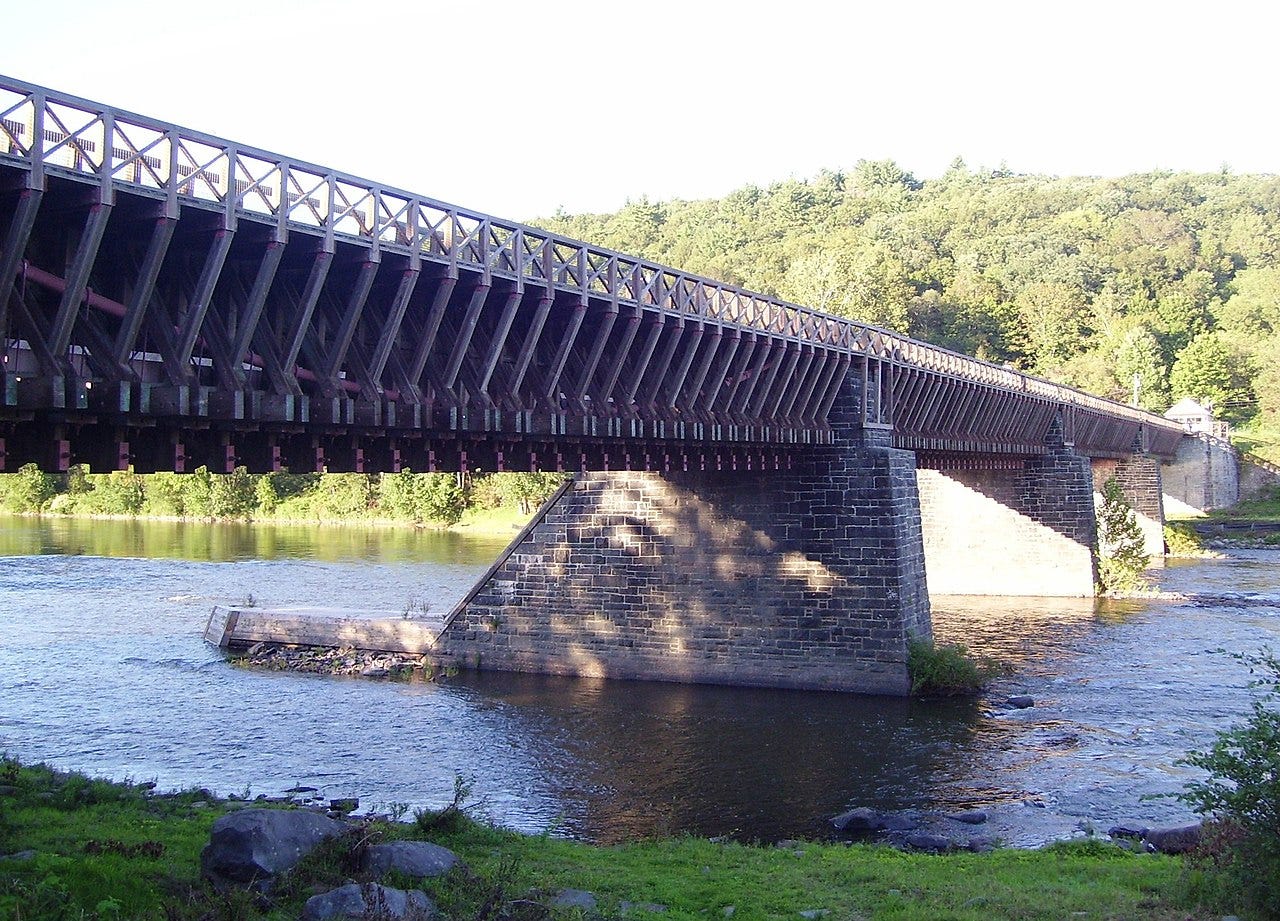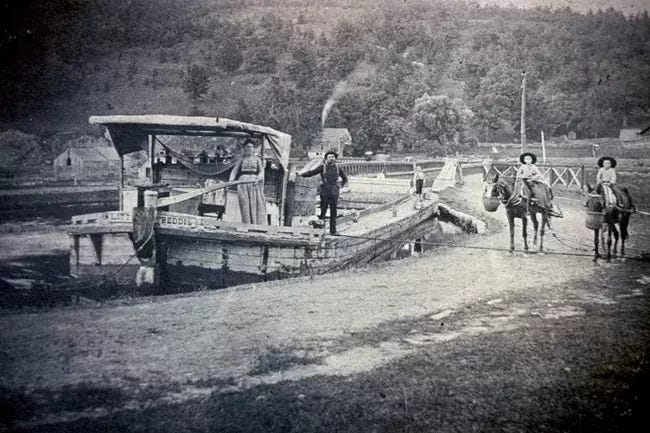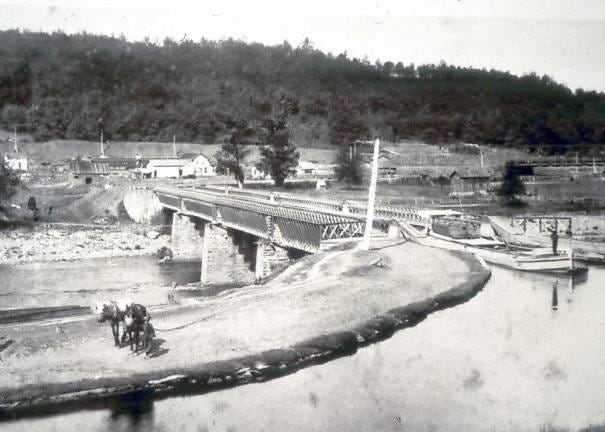I had to rent a car yesterday for the trip to West Point to witness Stewart Bornhoft receiving his Legacy Award from Knights Out, the cadet and graduate LGBTQ group at the Academy. (It was the second award to a member of the West Point class of 1969, I should note.) It turned out that Enterprise awarded me a Mazda 3 fastback, a sporty little thing that had four-wheel-drive and enough engine that it pinned my old back against the seat a little harder than usual a couple of times on the trip. So today, Tracy and I decided to take Ruby and drive up the Delaware River to see the Roebling Aqueduct in Lackawaxen, PA. For 50 years, the aqueduct was part of the Delaware-Hudson canal that carried coal, gravel, lumber and other heavy materials by barge from the area around Scranton where the anthracite coal mines were, down to Port Jervis, New York. From there, the canal took a sharp left turn and ran nearly straight northeast to Kingston, where the canal met the Hudson River. The coal would be off-loaded onto larger river barges and carried down to New York City, where it was used to heat apartment and office buildings. The barges on the D & H canal, as it was called, were pulled by mule teams driven by the barge owners, who lived on the barges as well as worked them along the canal system. The canal was 108 miles long, and the barges had to pass through 108 locks on their way from Honesdale and Hawley, PA, where the barges picked up coal from a gravity railroad that ran downhill from the mines further north and west.
Here’s a photo of the Roebling aqueduct over the Delaware River, named after the engineer who designed and supervised its construction. Today, the aqueduct is empty of water and serves as a one lane bridge from Minisink, New York to Lackawaxen, Pennsylvania. It is the oldest wire suspension bridge in the United States, and a real treat to visit if you are ever in the Delaware River valley.
The angled beams you can see running along the sides of the bridge support a pedestrian walkway that once served the mule teams that pulled the barges across the aqueduct.
Here’s an old picture of a barge family on the D & H canal about to cross the aqueduct. The mother is at the tiller, the father stands along the barge’s gunwale, and the kids are mounted on the mules that pull the barge.
Here’s a photo of a barge that just crossed the aqueduct and is about to turn south down the canal that ran alongside the Delaware River to Port Jervis, New York.
This is the way heavy materials like coal and gravel were moved before steam locomotives pulled trains along the railroad system that would be built across and around the country.
It was a good day all the way around for the fam!








I’m glad you had a great outing. That part of the Delaware is very scenic. Between 1963 and the mid-‘70s, I took many canoe trips down the Delaware. We started near Hancock, NY and in three days we were in Port Jervis, camping along the way. I was always leading a group of canoes with different aged groups, mostly high school and college students, and some adults. Did one trip with Pete Seeger in the bow of my canoe. High water, low water, good weather, bad weather. The first time I saw the Roebling bridge I was fascinated and I stopped the trip because I knew it was a significant structure. We all climbed up to have closer look. It was then privately owned, and was a toll crossing between Minisink Ford, and Lackawaxen. It looked quite rickety, and there was an elderly gnome-like, very grubby man who came out of the toll house on the NY side to collect the toll, a quarter in those days. He then lowered the rope barrier to allow the car to pass, and promptly put it back up. I don’t remember if pedestrians had to pay also. I subsequently researched the history of the D&H canal. Roebling built that bridge before the Brooklyn Bridge, which was his magnum opus, and took his life. He was still perfecting his suspension bridges when he built that one as a aqueduct to carry the canal across the Delaware. There’s another one just like it in Wheeling, WVa. After my first trip I always stopped there and gave a little lecture on what it was, the importance of the D&H, and the significance of the bridge design. The whole transport system fascinated me, and I spent time, when not on a canoe trip, finding the ruins of some of the locks along the Lackawaxen River along which the canal was built from Honesdale through Hawley and then down to Minisink Ford. Some of the most intact locks were along the Delaware beside Route 97. If I remember correctly, the canal was built in the 1820s, and closed in 1899. You brought back a lot of memories for me with your usual great writing.
Hi Lucian! Your trip and the mention of coal deliveries to NYC evoked a buried memory of sliding down coal chutes, with my younger brother and neighborhood friends, in Brooklyn through an open window, small size, into a basement onto a pile of coal. A lot of fun, which ended when we arrived home and had to explain why we were so filthy. Glad you and your loved ones had a great outing. Stay safe.